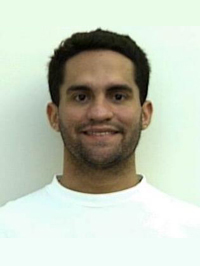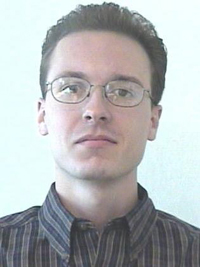- Cisco Community
- Technology and Support
- Data Center and Cloud
- Unified Computing System (UCS)
- Unified Computing System Discussions
- Ask the Expert: Cisco Unified Computing System 2.0: New Hardware and Software Features
- Subscribe to RSS Feed
- Mark Topic as New
- Mark Topic as Read
- Float this Topic for Current User
- Bookmark
- Subscribe
- Mute
- Printer Friendly Page
Ask the Expert: Cisco Unified Computing System 2.0: New Hardware and Software Features
- Mark as New
- Bookmark
- Subscribe
- Mute
- Subscribe to RSS Feed
- Permalink
- Report Inappropriate Content
02-07-2012 11:24 AM - edited 03-01-2019 10:16 AM
With Jose Martinez and Matthew Wronkowski


Welcome to the Cisco Support Community Ask the Expert conversation. This is an opportunity to learn about the new features supported on Cisco Unified Computing System (Cisco UCS) Generation 2 hardware with Cisco experts Jose Martinez and Matthew Wronkowski. Topics include the Cisco UCS 6200 Series Fabric Interconnect, Cisco UCS 2208 Fabric Extender, Cisco UCS Virtual Interface Card 1280 an overview of the hardware upgrade process for existing installations, as well as unified ports, increased chassis bandwidth, fabric port-channels, increased blade bandwidth, per-chassis discovery policies, and licensing.
Jose Martinez is an escalation engineer for server virtualization products in the RTP Technical Assistance Center. Jose joined Cisco in 1995 and has worked in multiple pre- and post-sales groups supporting different technologies, including Layer 2/Layer 3 switches, voice gateways, unified communications (Cisco CallManager), and most recently data center technologies (including Cisco UCS, Cisco Nexus 5000, and Cisco Nexus100v). He has presented in multiple Cisco Live events as well as traveled around the United States providing seminars and tech talks. Jose holds CCIE certification (number 1690) in Routing and Switching.
Matthew Wronkowski is an escalation engineer for server virtualization products in the RTP Technical Assistance Center. Matthew joined Cisco in 2001 and has worked in multiple pre- and postsales groups, including the Cisco IOS Technology Center, researching and developing home gateway products. He joined the Cisco Technical Assistance Center in 2004 supporting large service provider voice networks. In mid-2010 he moved to the Unified Computing and Virtualization team, where he became a focal point for Cisco Nexus 1000v and Cisco UCS products. Matthew holds CCIE certification (number 21202) in Voice. He holds a master of science degree in bioinformatics from the Rochester Institute of Technology.
Remember to use the rating system to let Jose and Matthew know if you have received an adequate response.
They might not be able to answer each question due to the volume expected during this event. Remember that you can continue the conversation on the Data Center sub-community discussion forum shortly after the event. This event lasts through February 17, 2012.. Visit this forum often to view responses to your questions and the questions of other community members.
This event is the continuation from the live webcast that experts gave on February 7th. You can review the slides of the presentation here. You can download read all the questions and answers that were asked during the live event here. The Complete Recording of this live Webcast can be accessed here.
- Labels:
-
Unified Computing System (UCS)
- Mark as New
- Bookmark
- Subscribe
- Mute
- Subscribe to RSS Feed
- Permalink
- Report Inappropriate Content
02-08-2012 03:58 PM
Hello, I wonder if we can connect 2208 to 6100 and/or a 6200 to a 2104. Can you let me know. I am trying to decide what would be the best choices I have available
- Alexander
- Mark as New
- Bookmark
- Subscribe
- Mute
- Subscribe to RSS Feed
- Permalink
- Report Inappropriate Content
02-09-2012 05:51 AM
Hello Alexander,
Yes both Fabric Interconnects are compatible with both IOMs. Both generations of equipment may be mixed and matched as necessary. Please keep in mind port-channeling between the FI & IOM is only supported on the 6200 and 2108 hardware.
- Mark as New
- Bookmark
- Subscribe
- Mute
- Subscribe to RSS Feed
- Permalink
- Report Inappropriate Content
02-10-2012 11:18 AM
hi, I am finally learning to set up a UCS, but there are still a few questions left to be answered. A HBA card, such as M81KVR has capabilities to have a certain number of vnics depending on the number of FEXes to the FIs. Why are the vnics differentiated into dynamic and static? Do we use static to vMotion and management and the dynamic to Vmware port groups? Are the dynamic vnics only used for VM-FEX? Should we use static vnics when VM-FEx is not used? Please tell me short the purpose of dynamic and static vnics and please give a link to a document describing more about this.
- Mark as New
- Bookmark
- Subscribe
- Mute
- Subscribe to RSS Feed
- Permalink
- Report Inappropriate Content
02-13-2012 11:02 AM
Hello Atle,
Static vNICs are network adapters presented to a bare-metal operating system (VMware, Linux, Windows, etc). Dynamic vNICs are the adapters presented by VM-FEX though the hypervisor to the virtual machine. For ESX, you would need to define 2 static vNICs and then a Dynamic vNIC Connection policy. In this configuration ESX management/storage/etc would be on the Distributed Switch(VM-FEX) along with all VM traffic. An alternative is to present 4 static vNICS - 2 for vSwitch, 2 for Distributed Switch. Management/storage traffic would remain on the vSwitch while VMs would be on the Distributed Switch.
Please see Step 2 in the Configuring a VMware ESX Host guide.
- Mark as New
- Bookmark
- Subscribe
- Mute
- Subscribe to RSS Feed
- Permalink
- Report Inappropriate Content
02-13-2012 01:38 PM
I have been researching the UCS platform for voice. Can you please tell me the best version of UCS to use for voice?
thanks!
- Mark as New
- Bookmark
- Subscribe
- Mute
- Subscribe to RSS Feed
- Permalink
- Report Inappropriate Content
02-13-2012 02:04 PM
Hello Karimiah,
Cisco Voice products are certified for all UCS versions. The answer to your question is more on which features & defect resolutions are most important to you. The UCS 1.4 train is more mature than 2.x but 2.x contains many more features and support for new hardware. We have equal success deploying voice products on both versions.
Matthew
- Mark as New
- Bookmark
- Subscribe
- Mute
- Subscribe to RSS Feed
- Permalink
- Report Inappropriate Content
02-14-2012 04:10 AM
Matthew,
I thought Voice products were only supported when ESXi4.1 was used on UCS. Are the voice products also supported on bare metal UCS now?
Eelco
- Mark as New
- Bookmark
- Subscribe
- Mute
- Subscribe to RSS Feed
- Permalink
- Report Inappropriate Content
02-14-2012 06:18 AM
Hello Eelco,
Bare-metal installations of Unified Communication products are not supported on bare-metal UCS. Many UC products are supported on both ESXi 4.x and 5.0. Please consult the Support Versions of VMware vSphere ESXi matrix for specific products.
Matthew
Discover and save your favorite ideas. Come back to expert answers, step-by-step guides, recent topics, and more.
New here? Get started with these tips. How to use Community New member guide

